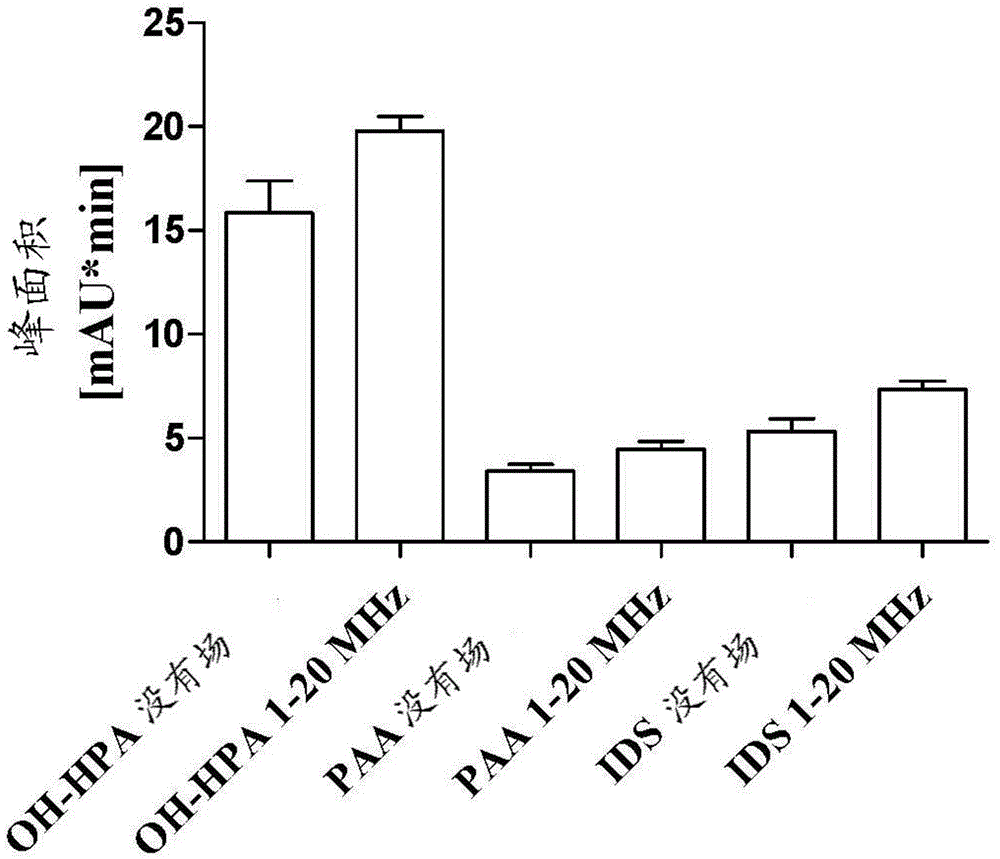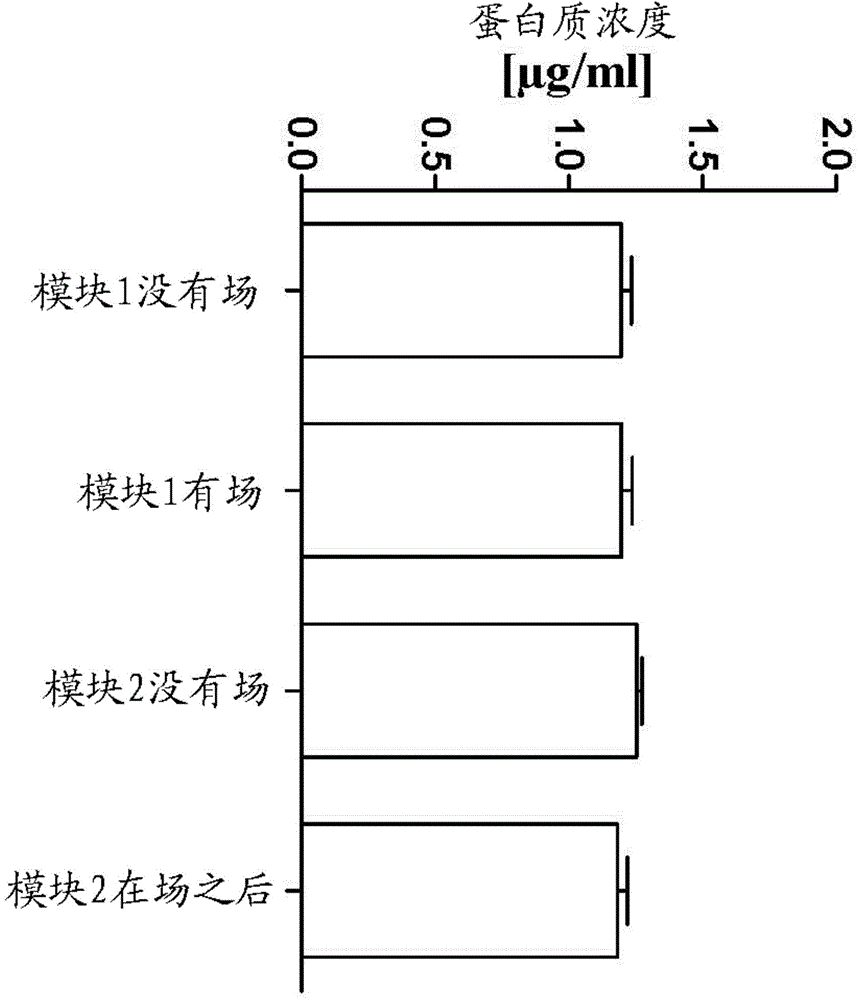Haemodiafiltration method
A technology of hemodialysis and hemofilter, which is applied in the direction of dialysis system, blood circulation treatment, drug equipment, etc., can solve the problem of unavailability
- Summary
- Abstract
- Description
- Claims
- Application Information
AI Technical Summary
Problems solved by technology
Method used
Image
Examples
Embodiment 1
[0064] The effect of high-frequency electromagnetic fields on the protein-binding moieties of uremic toxins was examined in a series of in vitro experiments.
[0065] A dialysis module is provided for this purpose, where conventional blood filtration capillaries are considered as circuits using silicone into the syringe receiving neck. In the presence of the uremic toxins phenylacetic acid, p-hydroxyhippuric acid and indoxyl sulfate, aqueous albumin solutions were introduced into the corresponding modules. The solution was filtered with a dialysis module for 10 minutes using a syringe pump. Subsequently, a high-frequency electromagnetic field is induced in the solution by using a high-frequency electrode (HF electrode). The electromagnetic field was increased from 1 MHz to 20 MHz in steps of 1 MHz during a period of 10 minutes by means of a high-frequency voltage source. The concentrations of the uremic toxins phenylacetic acid, p-hydroxyhippuric acid and indoxyl sulfate pre...
Embodiment 2
[0068] Inspection of HF field effects in the frequency range 1 to 170MHz.
[0069] An aqueous solution of bovine serum albumin (BSA, 60 mg / ml) was introduced into the dialysis module of Example 1 in the presence of the uremic toxin phenylacetic acid (1 mmol / l in 0.9% NaCl solution). The HF field was varied in sub-bands of 10 MHz within the frequency range 1-170 MHz and compared to a control experiment without HF field.
[0070] Quantitative determination of phenylacetic acid was performed using HPLC.
[0071] exist Figure 4 Collect the results of the experiments. Under the influence of the HF field, the separation rate for phenylacetic acid can be increased by at least 45.3%. In the sub-band from 110 to 120 MHz, the effect is particularly pronounced at 54.6%.
Embodiment 3
[0073] This example continues from the examination according to Example 2, which shows that the influence is particularly pronounced in the sub-band from 110 to 120 MHz.
[0074] In a further examination according to Example 3, the frequency range of approximately 110 to 115 MHz could in particular be identified as an effective frequency range for the release of protein-bound uremic toxins. Figure 5 The respective effects on the corresponding release and subsequent separation of phenylacetic acid are shown.
[0075] According to the current state, the frequency ranges schematically named in Table 1 are suitable for the isolation of protein-bound uremic toxins.
[0076] Table 1: Suitable frequencies in the HF field
[0077]
[0078] The corresponding frequency range is the range in which the maximum separation effect is determined. The increased separation was partially determined in the unnamed frequency range compared to the control; however, the increased separation wa...
PUM
| Property | Measurement | Unit |
|---|---|---|
| frequency | aaaaa | aaaaa |
| frequency | aaaaa | aaaaa |
Abstract
Description
Claims
Application Information
 Login to View More
Login to View More - R&D
- Intellectual Property
- Life Sciences
- Materials
- Tech Scout
- Unparalleled Data Quality
- Higher Quality Content
- 60% Fewer Hallucinations
Browse by: Latest US Patents, China's latest patents, Technical Efficacy Thesaurus, Application Domain, Technology Topic, Popular Technical Reports.
© 2025 PatSnap. All rights reserved.Legal|Privacy policy|Modern Slavery Act Transparency Statement|Sitemap|About US| Contact US: help@patsnap.com



